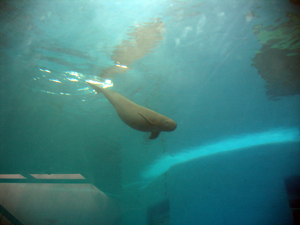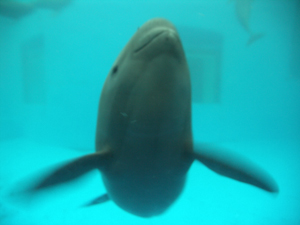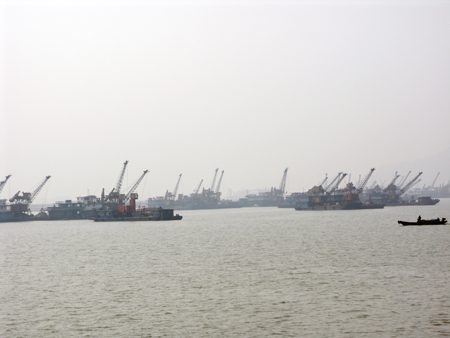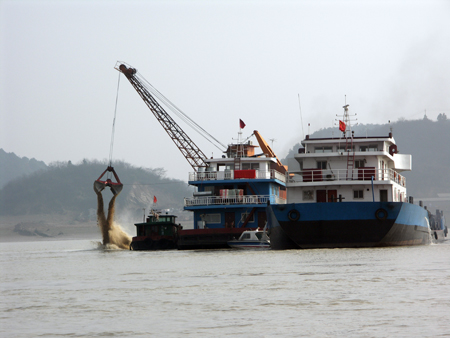(Duration: 1min20s)


Yangtze Finless Porpoises
Last December, the tragic news about the declaration of Baiji (Lipotes vexillifer), the rarest freshwater mammal found only in China, becoming "functionally extinct" alarmed the world for the destruction human have made to the Earth. Then in January, I joined an internship programme organized by the Ocean Park Conservation Foundation Hong Kong (OPCFHK) and the Swire Institute of Marine Science (SWIMS). So I got a chance to visit Poyang Lake in China, where Baiji once used to live.
The project was to monitor the abundance and the movement of the Yangtze Finless Porpoise and Baiji in the outlet and adjacent waters of Poyang Lake, carried out by the Institute of Hydrobiology (IHB) of the Chinese Academy of Science (CAS). There are three subspecies of finless porpoises in the world (we have Neophocaean phocaenoides phocaenoides in Hong Kong!) and it is the N. p. asiaorientalis alone that live in freshwater. Unfortunately, there are estimated 1400 individuals left!
We first visited the animal in the Baiji Dophinarium in the Wuhan-based headquarters of IHB. It is where the first captive-bred finless porpoise was born! Then we had a five-day field study in Poyang Lake. As Finless Porpoises had to come up to the water surface to breathe every few minutes, we could monitor them by visual observation. Yangtze finless porpoises produce high frequent "sound" for echolocation. Detection of the voice of the finless porpoises with high-technological acoustic devices helped the investigation of the abundance and movement of the animal in the project.
I was told before the survey that the main treat to the Yangtze Finless Porpoise and Baiji was habitat destruction, but still, I was stunned in the first sight by the scene of Poyang Lake. What I have seen was an ecological catastrophe! There were hundreds of dredgers and barges carrying thousands tones of sand from Poyang Lake. The water was awfully turbid. The natural riparian habitat was lost. Imagine how animals could survive in such a dangerous, disturbing and food-deficient environment! The listing of Yangtze Finless Porpoises as endangered under the 1996 IUCN Red List, and the commentary of baiji becoming functionally extinct are warning us of the collapse of the Yangtze River ecosystem. Although the road towards conservation was tough, hope is still there - as the research team from IHB is persistent with conservation in China and such passion was also a valuable experience I earned from this journey.
The Yangtze Finless Porpoise is now facing the same threats to the Baiji.
As a student as well as a Hong Kong citizen, we can help to arouse the
awareness of the issue, and that is a way we can contribute in saving
this precious animal.
Written by Small V. (HKU undergraduate)

